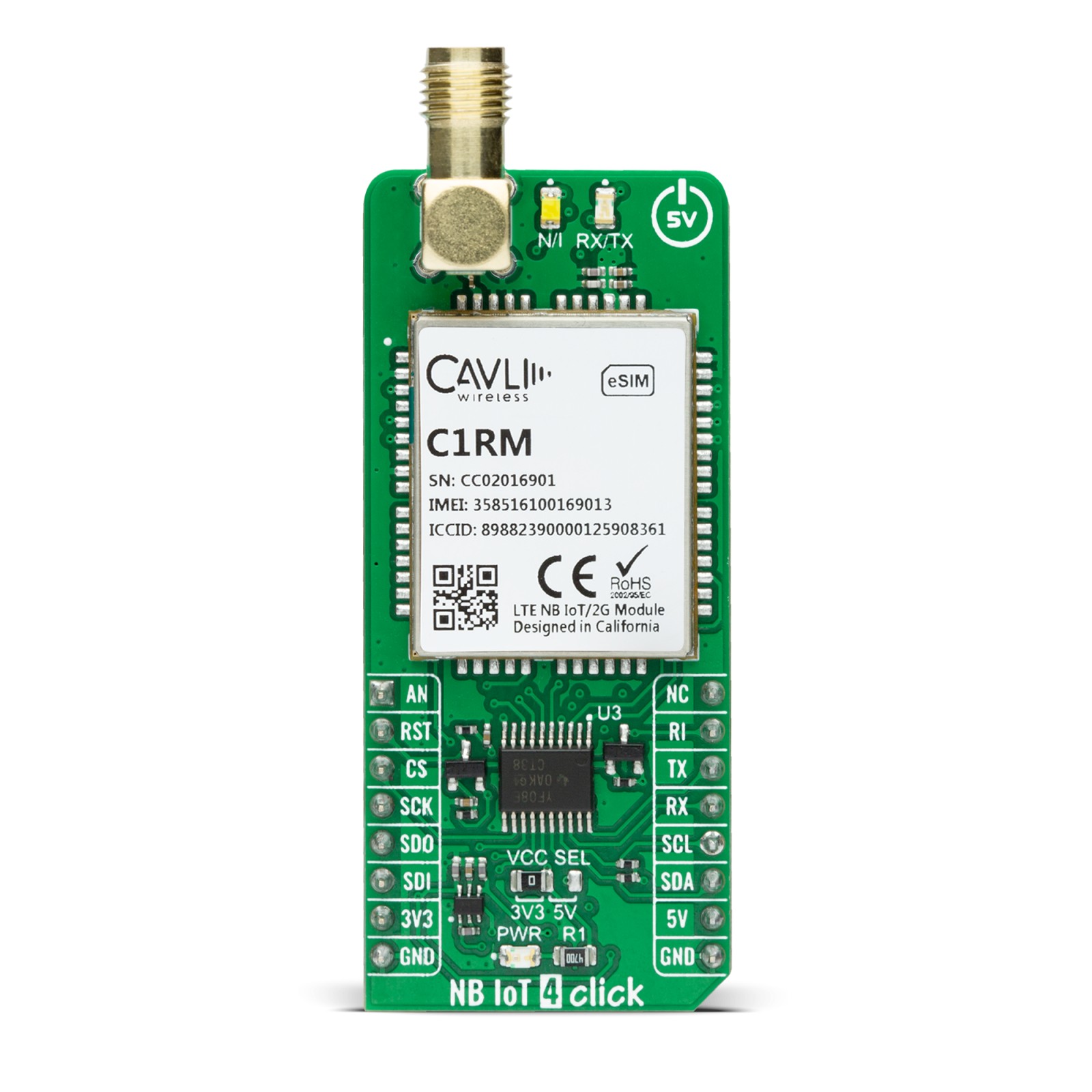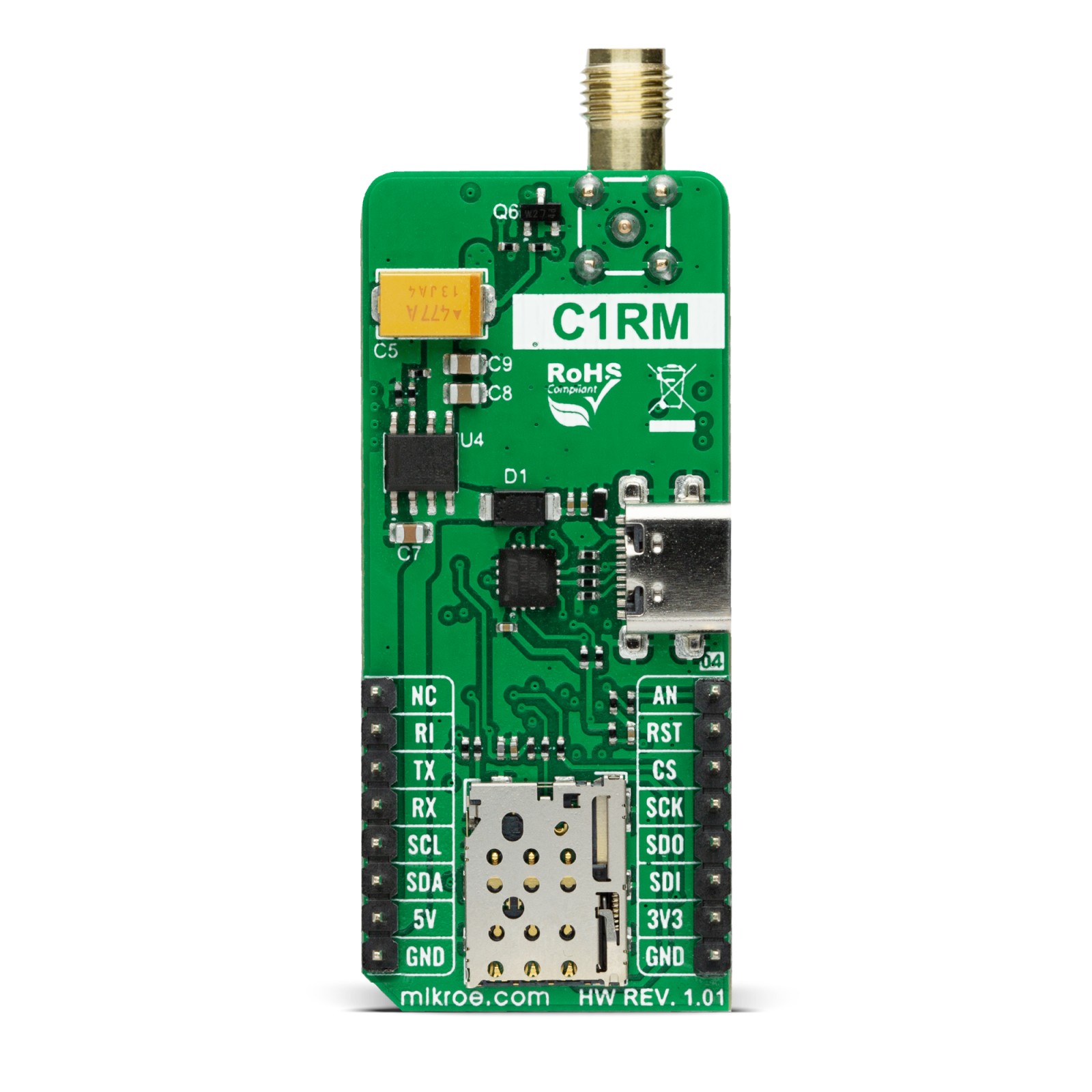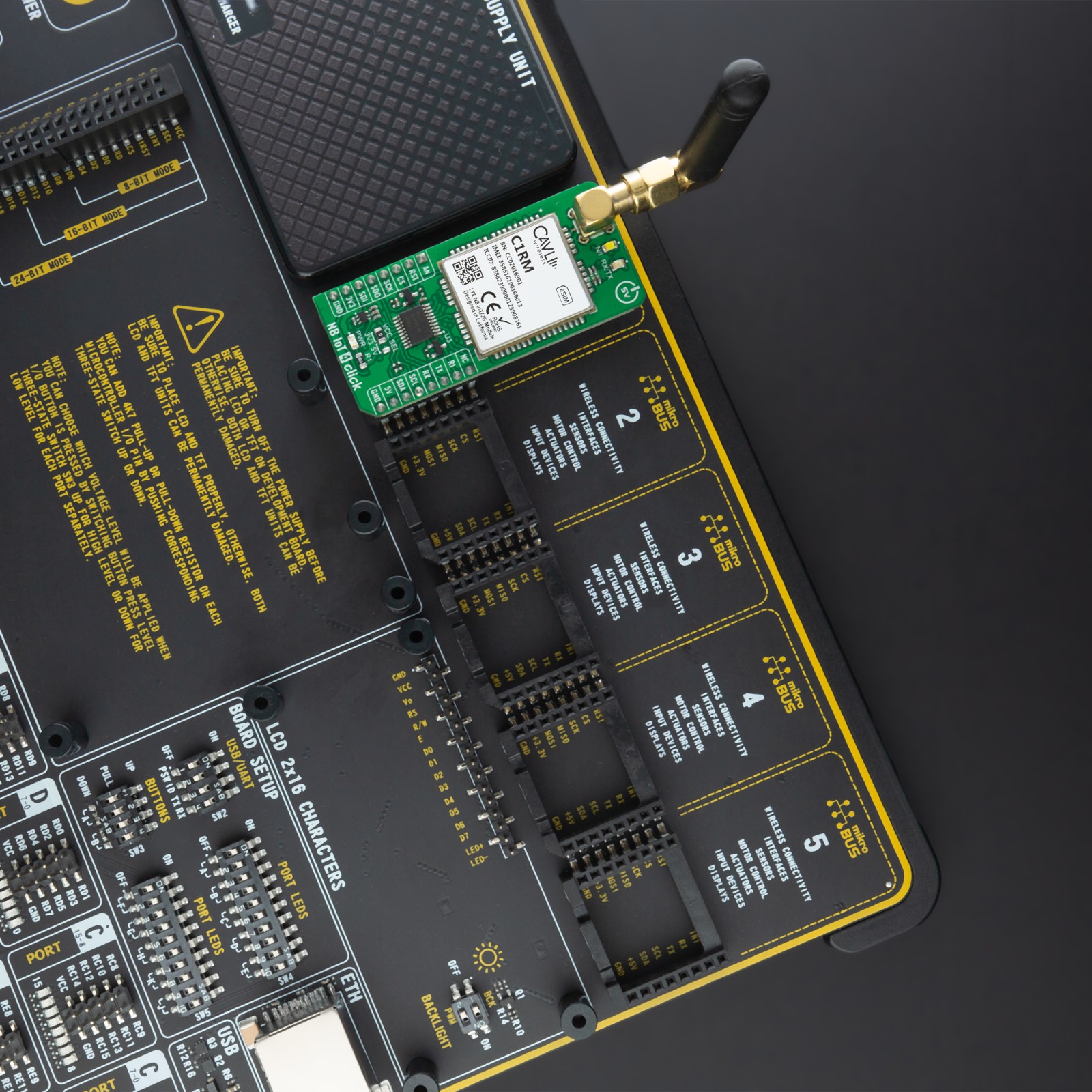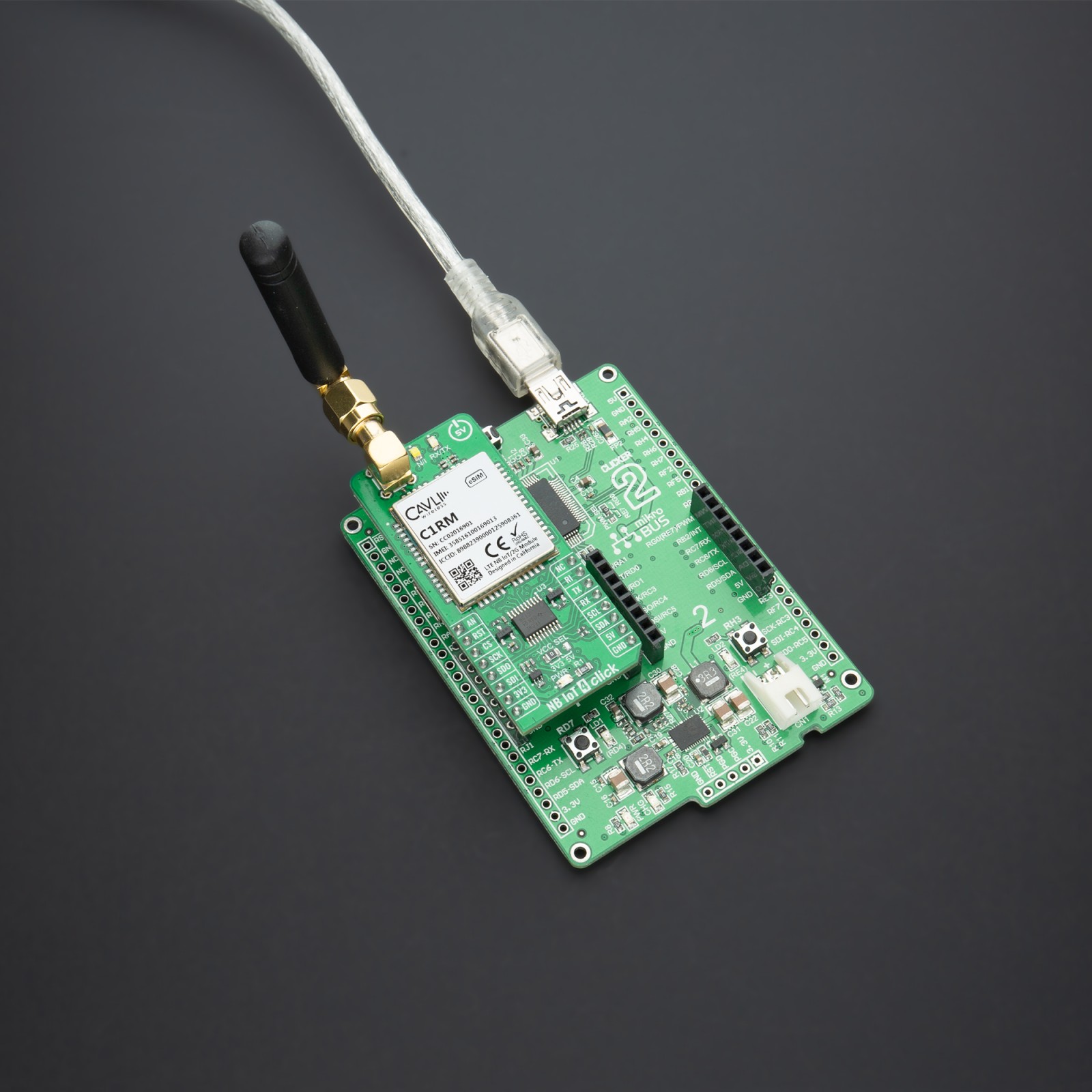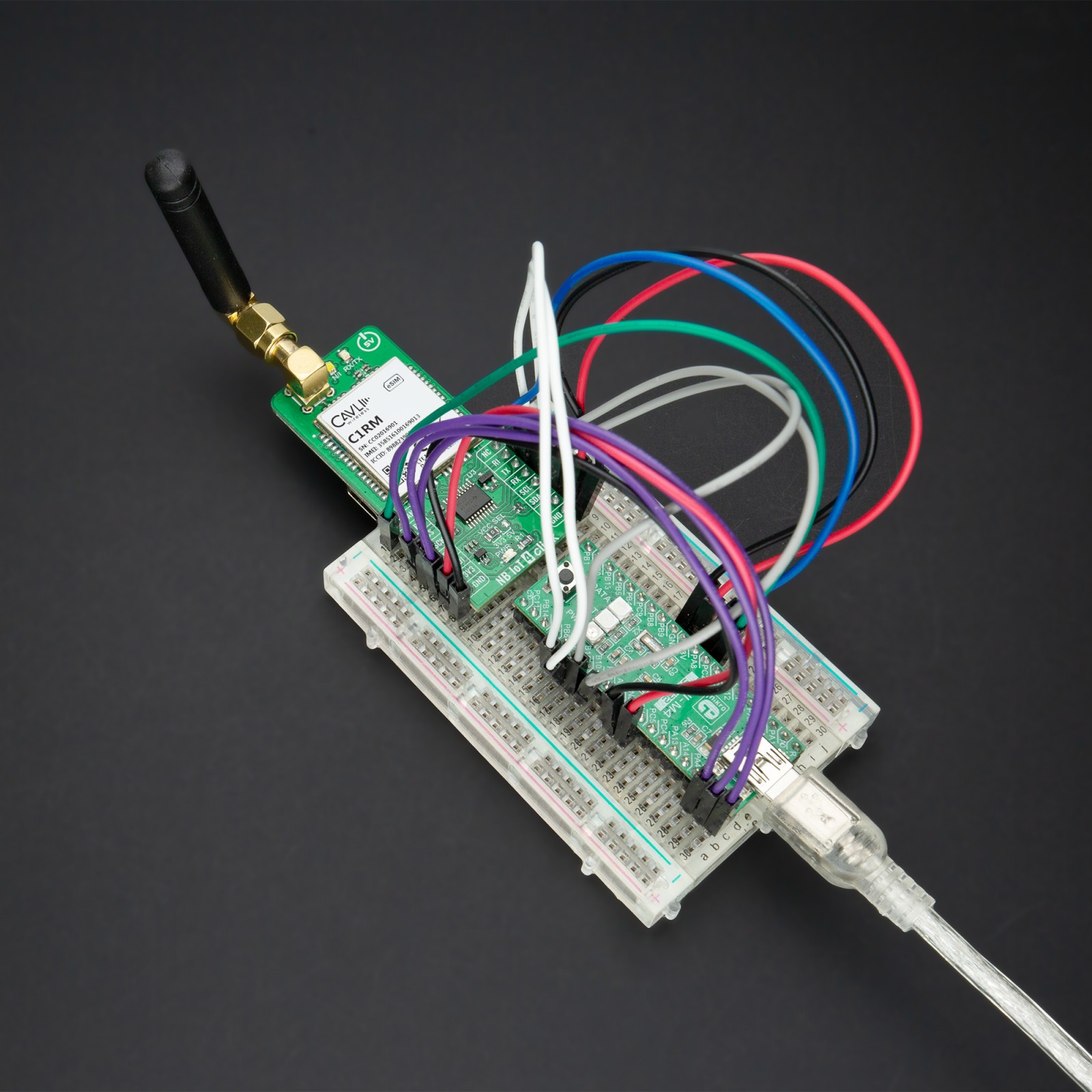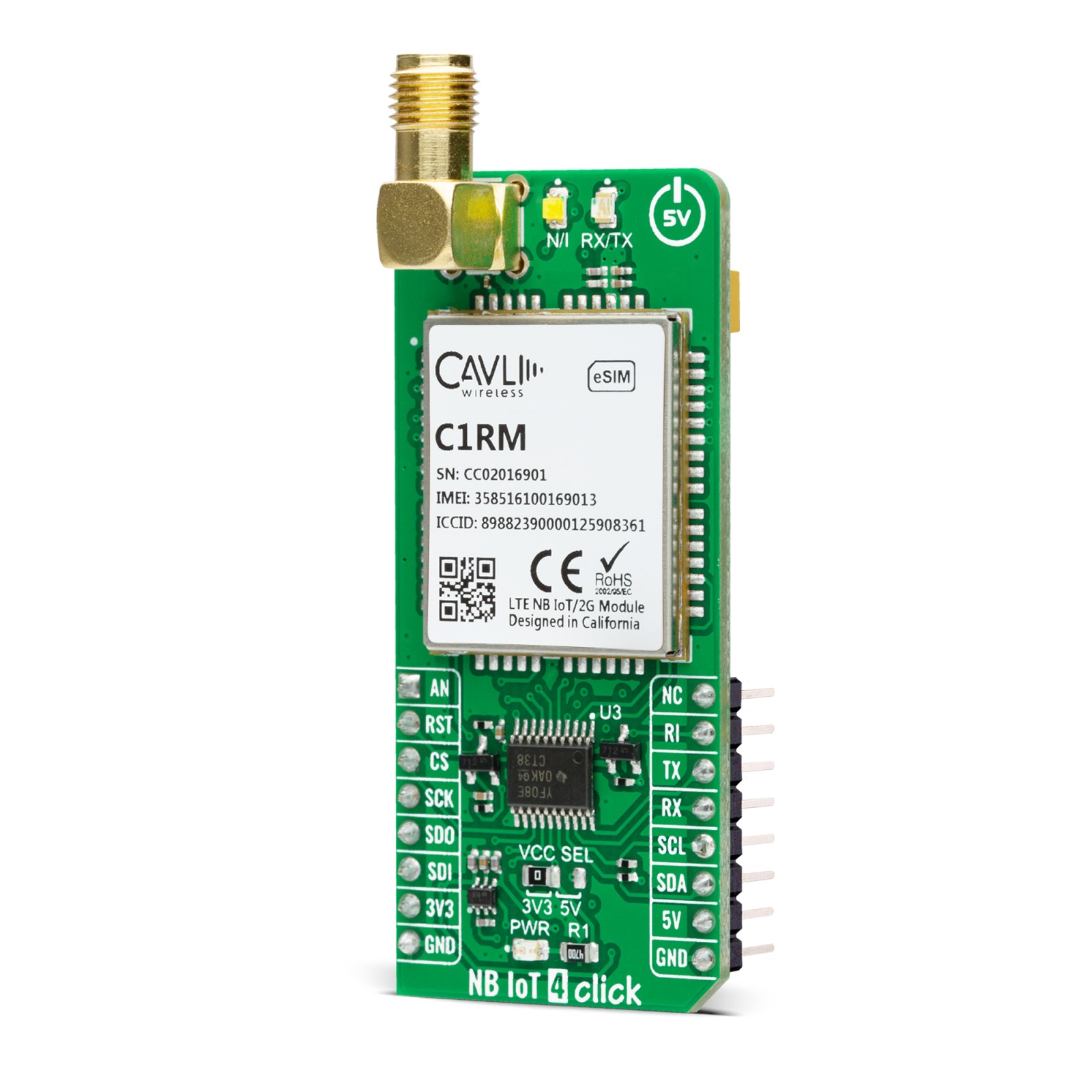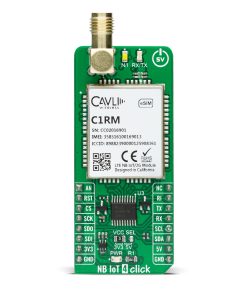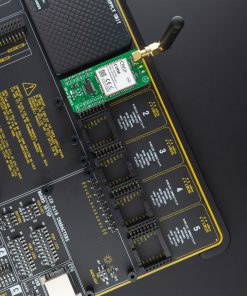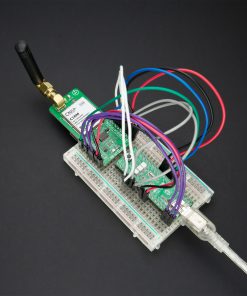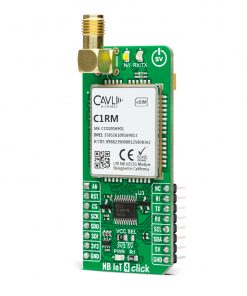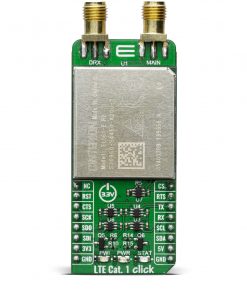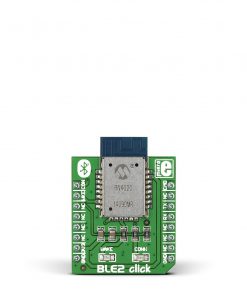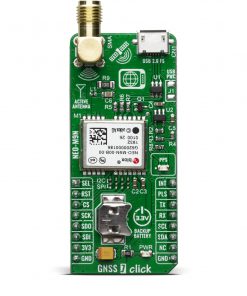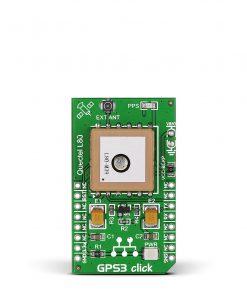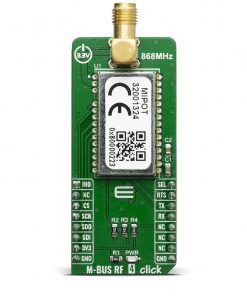NB IoT 4 Click
R1,200.00 ex. VAT
NB IoT 4 Click is a compact add-on board that contains a cellular IoT-based module with integrated eSIM for global data connectivity. This board features the C1-RM, a three-band NB-IoT IoT/2G wireless communication module supporting Band 3, 5, and 8 mainly applied to low power data transmission service from Cavli Wireless. The module also supports the 3GPP Release 13 standard and meets almost all M2M requirements because of its ultra-small size. It uses low-power technology with a Standby power consumption of less than 1mA, where deep sleep mode can be as low as 5uA. It also offers external interfaces, protocol stacks (providing great convenience for your applications), and a complete range of SMS and data transmission services to meet client-side demands. This Click board™ is suitable for many IoT applications, such as smart metering, intelligent wearables, security and asset tracking, home appliances, environmental monitoring, and more.
NB IoT 4 Click is supported by a mikroSDK compliant library, which includes functions that simplify software development. This Click board™ comes as a fully tested product, ready to be used on a system equipped with the mikroBUS™ socket.
Stock: Lead-time applicable.
| 5+ | R1,140.00 |
| 10+ | R1,080.00 |
| 15+ | R1,020.00 |
| 20+ | R981.60 |

